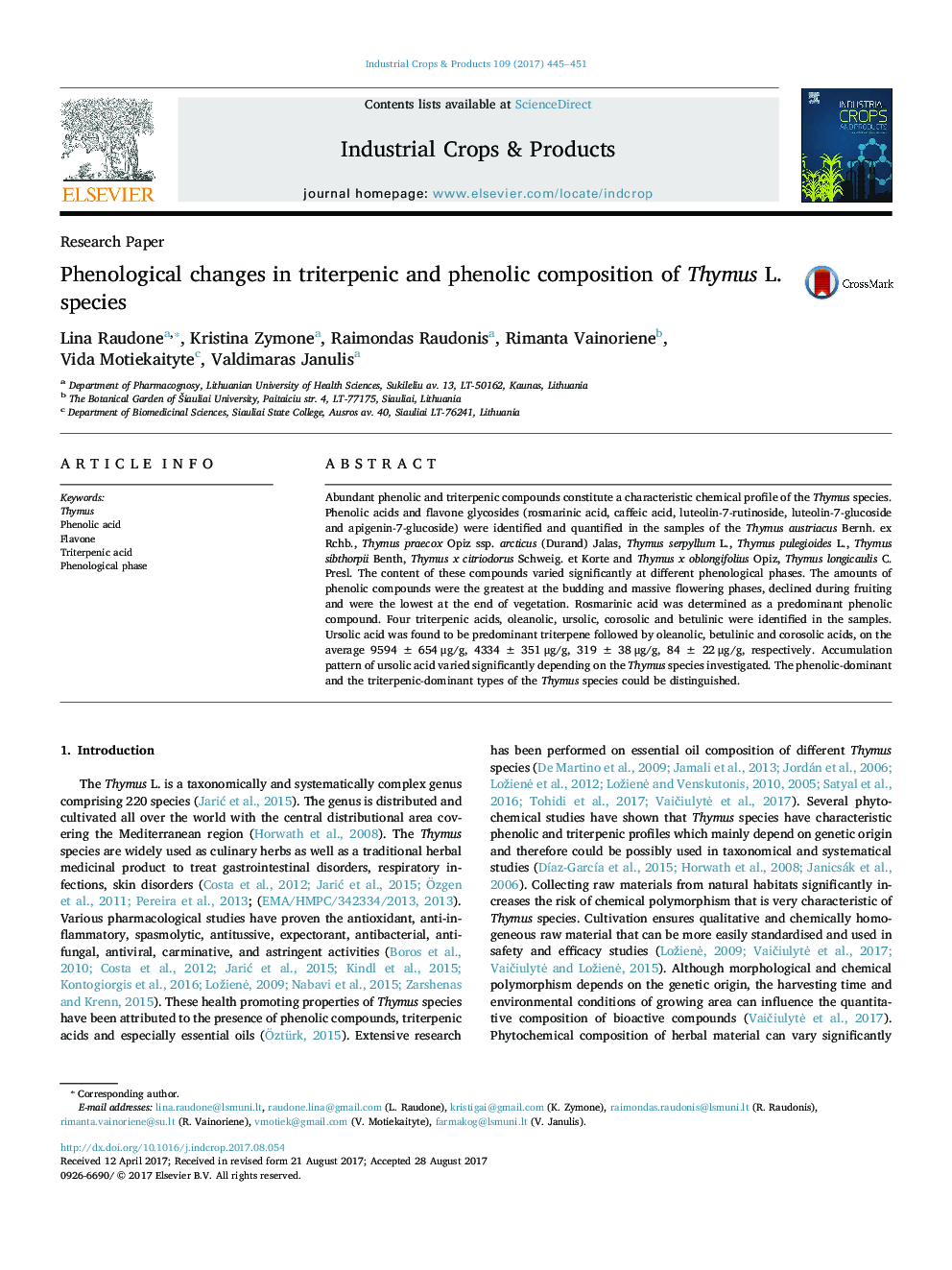| Article ID | Journal | Published Year | Pages | File Type |
|---|---|---|---|---|
| 5761694 | Industrial Crops and Products | 2017 | 7 Pages |
Abstract
Abundant phenolic and triterpenic compounds constitute a characteristic chemical profile of the Thymus species. Phenolic acids and flavone glycosides (rosmarinic acid, caffeic acid, luteolin-7-rutinoside, luteolin-7-glucoside and apigenin-7-glucoside) were identified and quantified in the samples of the Thymus austriacus Bernh. ex Rchb., Thymus praecox Opiz ssp. arcticus (Durand) Jalas, Thymus serpyllum L., Thymus pulegioides L., Thymus sibthorpii Benth, Thymus x citriodorus Schweig. et Korte and Thymus x oblongifolius Opiz, Thymus longicaulis C. Presl. The content of these compounds varied significantly at different phenological phases. The amounts of phenolic compounds were the greatest at the budding and massive flowering phases, declined during fruiting and were the lowest at the end of vegetation. Rosmarinic acid was determined as a predominant phenolic compound. Four triterpenic acids, oleanolic, ursolic, corosolic and betulinic were identified in the samples. Ursolic acid was found to be predominant triterpene followed by oleanolic, betulinic and corosolic acids, on the average 9594 ± 654 μg/g, 4334 ± 351 μg/g, 319 ± 38 μg/g, 84 ± 22 μg/g, respectively. Accumulation pattern of ursolic acid varied significantly depending on the Thymus species investigated. The phenolic-dominant and the triterpenic-dominant types of the Thymus species could be distinguished.
Related Topics
Life Sciences
Agricultural and Biological Sciences
Agronomy and Crop Science
Authors
Lina Raudone, Kristina Zymone, Raimondas Raudonis, Rimanta Vainoriene, Vida Motiekaityte, Valdimaras Janulis,
